|
Books Should Be Free Loyal Books Free Public Domain Audiobooks & eBook Downloads |
|
|
Books Should Be Free Loyal Books Free Public Domain Audiobooks & eBook Downloads |
|
Kid's Books |
|---|
|
Book type:
Sort by:
View by:
|
By: Annie F. Johnston (1863-1931) | |
|---|---|
 Big Brother
Big Brother
| |
 Ole Mammy's Torment
Ole Mammy's Torment
| |
By: Maria Edgeworth (1767-1849) | |
|---|---|
 The Parent's Assistant
The Parent's Assistant
| |
By: Logan Marshall (1884-?) | |
|---|---|
 Wonder Book of Bible Stories
Wonder Book of Bible Stories
It is with the desire of aiding parents and teachers in telling these stories, and aiding children to understand them, also in the hope that they may be read in many schools, that a few among the many interesting stories in the Bible have been chosen, brought together and as far as necessary simplified to meet the minds of the young. - Introduction by Jesse Lyman Hurlbut inside the book itself. | |
By: Amy Ella Blanchard (1856-1926) | |
|---|---|
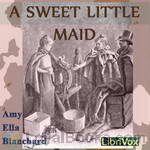 A Sweet Little Maid
A Sweet Little Maid
Dimple, the nine-year-old little girl is accustomed to being always the first. She has Bubbles, a little coloured girl as playmate and servant. One day Dimple’s cousin, Florence comes to visit her and they have a wonderful time together. But then come the rainy days and the two children easily get bored in the house… and that’s how the adventures and troubles begin. | |
By: Joseph Martin Kronheim (1810-1896) | |
|---|---|
 My First Picture Book With Thirty-six Pages of Pictures Printed in Colours by Kronheim
My First Picture Book With Thirty-six Pages of Pictures Printed in Colours by Kronheim
| |
By: Harriet Martineau (1802-1876) | |
|---|---|
 The Crofton Boys
The Crofton Boys
| |
By: Adalbert Stifter (1805-1868) | |
|---|---|
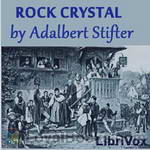 Rock Crystal
Rock Crystal
On Christmas Eve, two children, a brother and sister, leave their grandmother's house in an Alpine village and get lost in the mountain snow. They become trapped among the rock crystals of the frozen glacier. This short and gripping novel, by 19th century Austrian master Adalbert Stifter, influenced Thomas Mann and others with its suspenseful, simple, myth-like story and majestic depictions of nature. Poet W.H. Auden called the work "a quiet and beautiful parable about the relation of people to places, of man to nature."(Introduction by Greg W.) | |
By: Hans Aanrud (1863-1953) | |
|---|---|
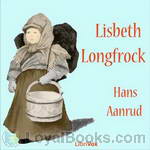 Lisbeth Longfrock or Sidsel Sidsærkin
Lisbeth Longfrock or Sidsel Sidsærkin
Lisbeth Longfrock - (Sidsel Sidsærkin in its original Norwegian) was seen by the author as a book written for adults, telling the story of a young girl growing up in a farming district in a steep-sided Norwegian Valley. It was first written when the author's daughter was 8 years old, the age of Lisbeth when the book begins, so she would know about his childhood spent in similar surroundings, living on a farm and spending summer in charge of the cows and goats on the mountain pastures. | |
By: Timothy S. Arthur (1809-1885) | |
|---|---|
 Who Are Happiest? and Other Stories
Who Are Happiest? and Other Stories
| |
By: Jessie Graham Flower (-1931) | |
|---|---|
 Grace Harlowe's Golden Summer
Grace Harlowe's Golden Summer
The College Girls Series sees the friends part ways: Grace, Anne, and Miriam depart for Overton College, while Jessica and Nora attend a conservatory. The Eight Originals gather on holidays, but the seven College books focus on the three at Overton, along with new friends like J. Elfreda Briggs. They form Semper Fidelis, a society devoted to aiding less fortunate students at Overton. Following graduation, Grace rebuffs offers of marriage for "what she had firmly believed to be her destined work," managing Harlowe House at Overton. | |
 Grace Harlowe's Return to Overton Campus
Grace Harlowe's Return to Overton Campus
The four series follow Grace Harlowe and her friends through high school, college, abroad during World War I, and on adventures around America. In The High School Girls Series, Grace attends Oakdale High School with friends Anne Pierson, Nora O'Malley, and Jessica Bright. The four promote fair play and virtue while winning over troubled girls like Miriam Nesbit and Eleanor Savell, playing basketball, and founding sorority Phi Sigma Tau. The group becomes friends with boys in their acquaintance: David Nesbit, Tom Gray, Hippy Wingate, and Reddy Brooks, forming "The Eight Originals... | |
 Grace Harlowe's Problem
Grace Harlowe's Problem
The four series follow Grace Harlowe and her friends through high school, college, abroad during World War I, and on adventures around America. The College Girls Series sees the friends part ways: Grace, Anne, and Miriam depart for Overton College, while Jessica and Nora attend a conservatory. The Eight Originals gather on holidays, but the seven College books focus on the three at Overton, along with new friends like J. Elfreda Briggs. They form Semper Fidelis, a society devoted to aiding less fortunate students at Overton. Following graduation, Grace rebuffs offers of marriage for "what she had firmly believed to be her destined work," managing Harlowe House at Overton. | |
By: William Wells Brown (1814-1884) | |
|---|---|
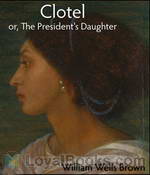 Clotel, or, The President's Daughter
Clotel, or, The President's Daughter
Clotel; or, The President's Daughter is a novel by William Wells Brown (1815-84), a fugitive from slavery and abolitionist and was published in London, England in December 1853. It is often considered the first African-American novel. This novel focuses on the difficult lives of mulattoes in America and the "degraded and immoral condition of the relation of master and slave in the USA" (Brown). It is about the tragic lives of Currer, Althesea, and Clotel. In the novel, Currer is the former mulatto mistress of President Thomas Jefferson who together have two daughters, Althesea and Clotel... | |
 Clotelle; or, the Colored Heroine, a tale of the Southern States; or, the President's Daughter
Clotelle; or, the Colored Heroine, a tale of the Southern States; or, the President's Daughter
| |
 Clotelle: a Tale of the Southern States
Clotelle: a Tale of the Southern States
| |
By: Dinah Maria Mulock Craik (1826-1887) | |
|---|---|
 The Adventures of A Brownie As Told to My Child by Miss Mulock
The Adventures of A Brownie As Told to My Child by Miss Mulock
| |
By: Edith E. Wiggin | |
|---|---|
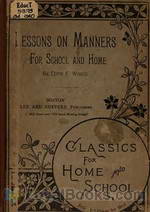 Lessons on Manners for Home and School Use
Lessons on Manners for Home and School Use
It is true that good manners, like good morals, are best taught by the teacher's example. It is also true that definite lessons, in which the subject can be considered in its appropriate divisions, are of no little value if we would have our children attain to "that finest of the fine arts, a beautiful behavior." (From the author's Introduction) | |
By: Kate Douglas Wiggins (1856-1923) | |
|---|---|
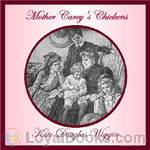 Mother Carey’s Chickens
Mother Carey’s Chickens
“When Captain Carey went on his long journey into the unknown and uncharted land, the rest of the Careys tried in vain for a few months to be still a family, and did not succeed at all. They clung as closely to one another as ever they could, but there was always a gap in the circle where father had been….. The only thing to do was to remember father's pride and justify it, to recall his care for mother and take his place so far as might be; the only thing for all, as the months went on, was to be what mother called the three Bs -- brave, bright, and busy... | |
By: Edward V. Lucas (1868-1938) | |
|---|---|
 Forgotten Tales of Long Ago
Forgotten Tales of Long Ago
| |
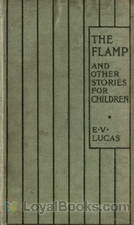 The Flamp, The Ameliorator, and The Schoolboy's Apprentice
The Flamp, The Ameliorator, and The Schoolboy's Apprentice
| |
By: H. Irving Hancock (1868-1922) | |
|---|---|
 The Grammar School Boys in Summer Athletics
The Grammar School Boys in Summer Athletics
| |
By: Charles Alexander Eastman (1858-1939) | |
|---|---|
 Indian Child Life
Indian Child Life
The author was raised as an American Indian and describes what it was like to be an Indian boy (the first 7 chapters) and an Indian Girl (the last 7 chapters). This is very different from the slanted way the white man tried to picture them as 'savages' and 'brutes.'Quote: Dear Children:—You will like to know that the man who wrote these true stories is himself one of the people he describes so pleasantly and so lovingly for you. He hopes that when you have finished this book, the Indians will seem to you very real and very friendly... | |
By: Mary T. Waggaman (1846-1931) | |
|---|---|
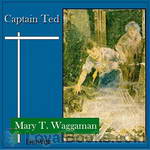 Captain Ted
Captain Ted
When tragedy hits his family, in the form of a sudden illness to his father, young Teddy Thornton is forced to leave school and find work to help support his family. Without his realization he is thrown into a world of crime and counterfeiting. Will he do the right thing, or will he unwittingly be drawn down the wrong path? And will the mystery of Heron Hall be solved? | |
By: John Gay (1685-1732) | |
|---|---|
 Fables of John Gay (Somewhat Altered)
Fables of John Gay (Somewhat Altered)
| |
By: Fanny Fern (1811-1872) | |
|---|---|
 Little Ferns For Fanny's Little Friends
Little Ferns For Fanny's Little Friends
| |